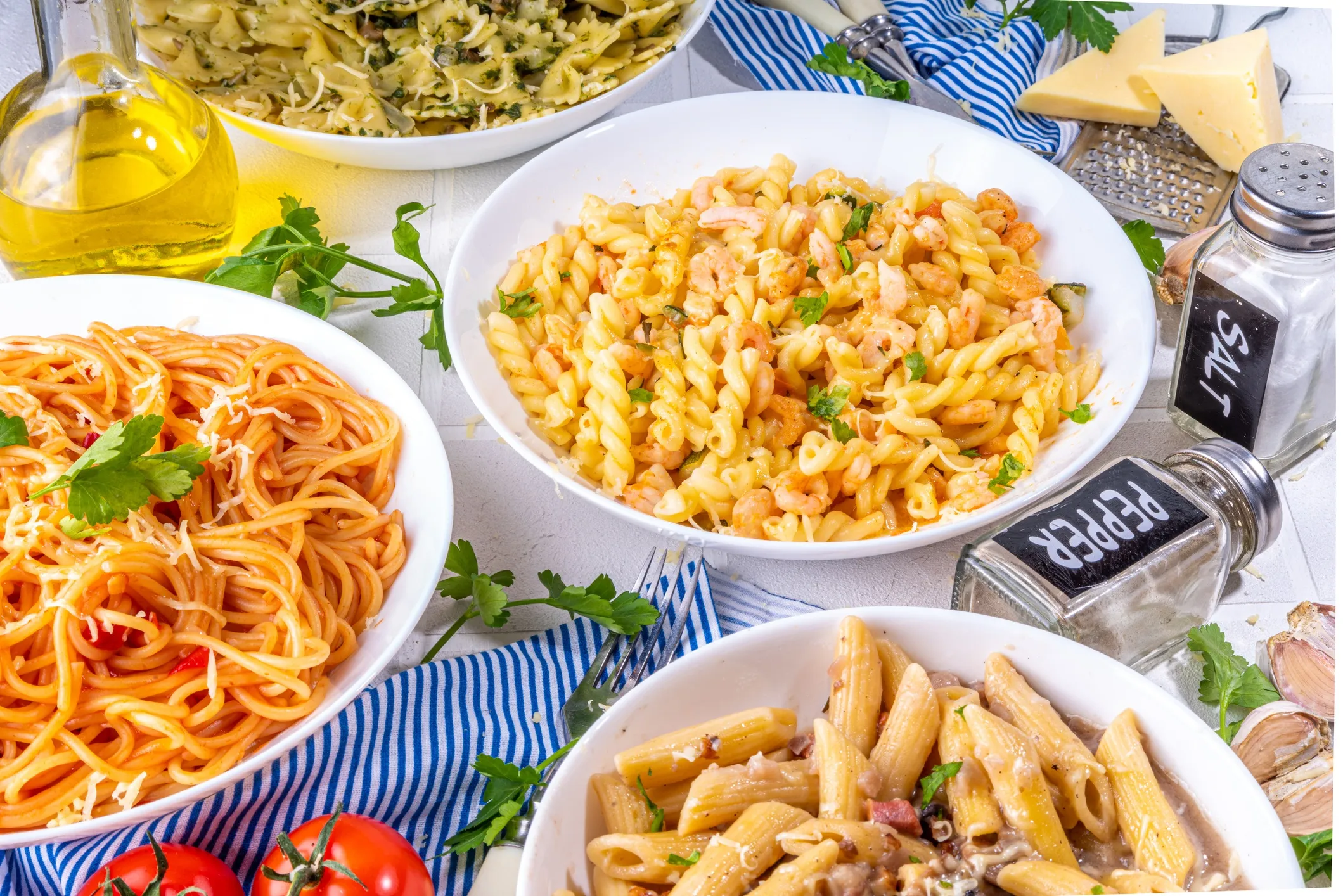ISO 7304-1:2016—Durum Wheat Semolina and Alimentary Pasta

There are approximately 350 different types of pasta. Furthermore, there are about four times that many names for pasta, since some types may have different names even in the same language. In Italy, for example, names vary according to the region or area and additionally pasta manufacturers and cooks may come up with new shapes or give new names to old shapes. Each shape is designed to hold the sauce in the best way possible. ISO 7304-1:2016—Durum Wheat Semolina And Alimentary Pasta – Estimation Of Cooking Quality Of Alimentary Pasta By Sensory Analysis – Part 1: Reference Method specifies a test method for the cooking quality of alimentary pasta, a dough used to form many types of pastas.
Alimentary Paste
The word “pasta” derives from the Italian word meaning “paste” that refers to the paste used to make pasta dough with egg or water and flour. Alimentary paste is shaped and dried dough prepared from semolina, farina, wheat flour, or a mixture of these with water or milk and with or without egg or egg yolk. It refers to the macaroni spaghetti, vermicelli, and other similar items made from durum wheat flour, a type of hard wheat. The use of durum wheat sets pasta apart from other forms of noodles. Durum wheat has high gluten content and low moisture that make it perfectly suited to pasta production. The durum wheat dough is pressed into sheets, cut into a variety of shapes, and cooked before serving.
What Is ISO 7304-1?
ISO 7304-1:2016 sets out a method for estimation by sensory analysis of the cooking quality of alimentary pasta. Estimation takes place through the evaluation of the following:
- Firmness, by chewing
- Liveliness, by manual handling
- Starch release, by manual handling
The method provided in this standard does not express a preference and only gives an estimate relating to the evaluation of the cooking of the pasta; it does not apply to small pasta shapes usually consumed in soups.
Where Did Pasta Come From?
Archaeologists believe that central Asia is most likely the first area to have produced noodles as early as 5000 BC. From Asia, noodles traveled westward. The way it reached Europe is unclear, though there are many theories. Some believe that nomadic Arabs are responsible for bringing early forms of pasta westward. This type of pasta was called Itriyya because of its Middle Eastern origins, and it had Middle eastern flavors such as raisins and cinnamon.
Legend has it that famed explorer Marco Polo introduced noodles to Italy in the 12 century, but historical records indicate the pre-Roman Etruscan civilization had already been making their own pasta (smashing the grain with rocks and mixing it with water to create dough) by 500 BC. Once noodles reached the Mediterranean, the process was refined, and durum wheat became the ingredient of choice for pasta flour because of its high gluten content and long shelf life. The warm Mediterranean climate of Italy is suited to growing fresh vegetables and herbs. In 1519 Spanish explorer Cortez brought tomatoes from Mexico to Europe, and thus tomatoes and pasta soon became an iconic combination in Italy.
Early Spanish settlers were among the first to bring pasta to America. It was Thomas Jefferson, however, who popularized pasta in America. During an extended stay in Paris from 1784-1789, Jefferson ate macaroni made in Naples with a particular sort of flour called Semola. He enjoyed the dish so much that he returned to America with two cases in tow. When his supply ran out, he sent for reinforcements via a friend from Naples.
Test Method for Alimentary Pasta
ISO 7304-1:2016 maintains that when testing alimentary pasta, the panel of sensory assessors should consist of at least 10 qualified assessors selected by means of a triangle test in accordance with ISO 4120, adapted for the estimation of cooked pasta. The assessors should also be trained in accordance with ISO 8586. The samples should be presented one after another, starting with the reference sample. No assessor should ever have more than one plate plus the reference sample in front of them. At the most, six pastas may be evaluated (including the reference sample) at one time. The test should always start with the presentation of the reference sample, the firmness, liveliness, and starch release ratings of which are known to the assessors.
ISO 7304-1:2016—Durum Wheat Semolina And Alimentary Pasta – Estimation Of Cooking Quality Of Alimentary Pasta By Sensory Analysis – Part 1: Reference Method is available on the ANSI Webstore.






